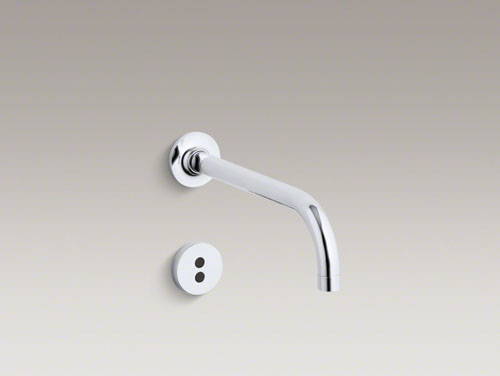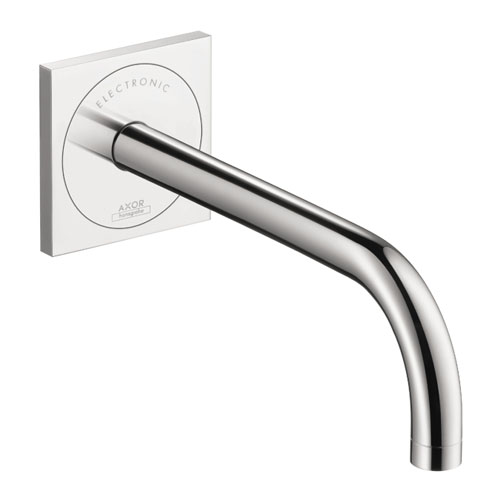The High Price of Modernism
Our design for the downstairs half bathroom has always been a more pure modernist look. Upstairs I let my moderate obsession with valves have a stronger footing, but the feeling downstairs has always been intended to be seamless and smooth.
Hence the desire for the wall-mounted electronic faucet.
But I'm fussy about what I want from such a faucet. I'm not going for the airport bathroom look, and some of them require batteries which is not really something I want to be dealing with on an ongoing basis.
AND -- this is no small deal -- I wanted the water coming out of the faucet to always be the same, warm temperature. I was not looking to have my hands frozen or burnt at any random time, and certainly not those of my visitors. A thermostatic faucet valve turned out to be a much bigger deal than I expected.
My first choice was the Toto Helix wall-mount. But between my deciding on that faucet and ordering it, Toto discontinued the 60-second version, and the only one they sell now is a commercial faucet designed to produce 10 seconds of water at a time. Which was not what I wanted in our bathroom, because I will often be washing my hands after yard work in there, and I don't want to be playing games with getting the water to turn on when I have compost under my fingernails.
My attempt to buy some of the last stock of the 60-second version is already documented. Not surprisingly, several companies still list this faucet for sale on their sites, even as I contacted them and asked if they could get that exact faucet for me, and they all said no.
With the Toto out of the running, I thought of the Kohler Purist line, which has a couple of styles of wall-mount faucets, with the very appealing choice between a 9" length and a 6" length.

I liked the nice, clean lines, and a shorter faucet would be a nice thing. The thing I didn't like was the little outside sensor there. Add in the price of the thermostatic valve plus the controller, and this was a significantly more expensive faucet, even not paying full retail.
Most other faucets didn't meet my criteria from the get-go. Either they were too fussy, or didn't have a mixing valve available (so I would have to rig up my own), or they were designed for high-traffic commercial installations.
This week I finally settled on Hansgrohe's Axor Uno faucet. I don't really fully understand the reasoning behind all of Hansgrohe's various product lines, but basically Axor is run as its own company. Is that relevant to anything? I don't think so, but maybe eventually.

So there's the faucet. It has a 9" reach, which is fine. I'm not super crazy about that massive escutcheon there, but that gives you access to the valves behind the wall which is a nice thing. And the valves are quite nice for this faucet, which is worth a great deal to me. Ignore the retail price; most of these things are available for significantly less than that from even the most ordinary supplier.
What was amazing was how hard it was to find installation information, which I wanted to read over to be sure this had the kind of valves and electrical connection I wanted.
I was looking at the page on their main web site, which has a "Product Data Sheet" PDF available for download. That PDF says for more information I should go to their web site, but there was no further information on the web site, which I knew because I was trying to get more information when I downloaded the Product Data Sheet.
It took some serious poking around looking for resources, anything, so finally find an obscure link to their professional site ("For specialist partners" at the bottom of the page, not "Downloads and brochures," "FAQ," or even in the upper menus "Reference.")
The professional site is almost the same page, but they offer PDFs of the installation instructions. The only difference between the two is that one URL starts with www and the other one starts with pro. Why this is necessary, I do not know. It seems silly to build basically two nearly identical web sites to hide your technical information from one group of users, who may well be very interested in that information. And CAD files of the fittings were hidden off on another page altogether. OK, fine, most people don't need CAD files of their faucet, and maybe it saves you something in customer service by not having to explain to people what CAD files are and why they don't need to download them. But probably not.
At any rate, I finally have a faucet on its way to me for the downstairs bathroom, and another post-it has been removed from the planning wall.
posted by ayse on 04/27/14